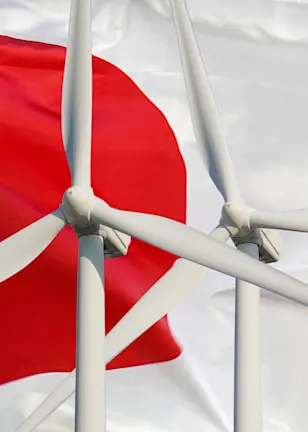India’s growth trajectory is shifting to a new and higher plane, and this is likely to boost investment in Indian equities. India’s gross domestic product (GDP) has grown to an expected USD 3.75 trillion in 2023 from USD 2 trillion in 2014 and the country is now the 5th largest economy in the world, overtaking the UK in 2022. The IMF projects that India will be the fastest growing major economy in 2024 with a forecast 6.3% GDP growth compared to 4.5%, 1.4% and 1.1% for China, the Eurozone and the US respectively.
India’s potential has never been in doubt, but its relatively closed and heavily regulated economy underperformed from independence in 1947 to the early 2000s, when pockets of export strength like technology services and pharmaceuticals emerged.
“
Economic progress is driving both domestic consumption and exports
Opening the economy and investing in productive infrastructure and reforms to improve efficiency has been a slow process. However, since the start of Prime Minister Narendra Modi’s administration in 2014, economic progress and reform momentum have accelerated.
Figure 1: India’s virtuous circle

Source: Robeco
The ongoing reforms, including massive investment in infrastructure, are expected to increase India’s total factor productivity and manufacturing share of GDP. In addition, India is experiencing fast paced digitalization which is democratizing credit in the economy by offering a greater share of the population access to financial services, unleashing India’s latent entrepreneurial spirit.
Underlying these two factors is India’s demographic advantage. By 2030 77% of India’s more than 1.5 billion population will be millennials and Generation Z, prime working age adults. Combined with rising income levels, this demographic set up can substantially boost India’s level of domestic consumption.
Demographics and digitalization are driving consumption growth
India is expected to be one of the world’s growth drivers through the next decade. Its huge and growing working-age population is benefiting from rising investment and fast-paced digitalization, helping the world’s most populous country start to flex its economic muscles.
According to a joint study by World Economic Forum and Bain Consulting, domestic consumption in India, which powers about 60% of GDP today, is expected to quadruple by 20301. This consumption growth will be supported by a young (in 2030 the country’s median age will be 31 years), growing population that will urbanize fast. It will also be driven by rising household incomes, which will transform India from a bottom of the pyramid economy to a middle class led one.
Morgan Stanley projects the middle class cohort in the USD 10,000 to 35,000 annual income bracket will double in size to include nearly half the population by 2031 giving hundreds of millions of people significant disposable income for the first time.
Figure 2: Annual household income distribution in India

Source: Morgan Stanley
Among major emerging economies, India is also the least urbanized country with only around 35% of the population living in cities. We see urbanization as a strong driver of economic growth, robust investment, and consumption in India. Urbanization requires significant fixed asset investment to build housing and transport links and this trend is firmly underway with investment growing strongly.
According to the Indian government 54,000 km of highways have been built since 2014, including high profile projects like the new Delhi-Mumbai expressway (which is near completion). Electrification of the country’s vast rail network is now at 90% while two ‘Dedicated Freight Corridors’, down the west and east coasts, designed to increase speed and lower costs for rail freight users, are under construction. In 2023 the government’s capex budget was USD 122.3 billion, equivalent to 3.3% of GDP, double the average level of the previous decade.
Fast paced digitalization is democratizing the economy
According to the World Economic Forum, access to the internet will extend to about 1.1 billion users with 90% of Indians over 15 years old expected to be online by 2030.
India’s mobile penetration is catching up to China and the US, with data from GSMA Intelligence showing that there were 1.14 billion cellular mobile connections in India at the start of 2022, equivalent to around 70% of the population, but not all included data plans. Penetration in rural areas is lower but already low data prices are enabling rapid growth in online access.
This leap in connectivity is driving online retail, with India’s e-commerce market estimated to increase to USD 150 million to USD 170 billion by 2027. This implies 25%–30% annual growth and doubling of market penetration to 10% over the next five years with India’s online shopper base will scale from up to 400–450 million by 20272.
We believe consumer brands and organized retailers stand to benefit from this rapid evolution of India’s retail sector.
Get the latest insights
Subscribe to our newsletter for investment updates and expert analysis.
Financialization underway
The emergence of this young, digital savvy economy is having a profound impact on India’s financial sector, and we see this as another key development with positive macroeconomic implications, which also represents a long-term investment opportunity. India has traditionally stored some wealth in physical forms like gold bullion, but we believe the increased availability of Fintech retail investment products will increase the proportion of equity investment.
Fintech start ups are likely to be the key to servicing this market and will provide new sources of credit. India’s credit to GDP at 57% is around half the average level of its G20 peers, with household debt around 35% of GDP. The IMF have suggested that rising incomes and savings in India are likely to depress long term interest rates and amplify the impact of easier access to credit. This represents another firm structural positive for India.
Manufacturing benefiting from friend-shoring and PLI scheme
Growing geopolitical tensions in recent years, as well as rising wage levels in China, have encouraged some global companies to diversify their supply chains and build facilities at home, or in other countries they perceive as suitable. This has benefited countries like Mexico, South Korea, Japan, Vietnam and India. The most high profile example has been technology giant Apple which started manufacturing smartphones via its contract manufacturing partners in India in 2020, encouraged by the government incentives. The company currently sources 7% of its smartphones from India and, according to analyst and Indian government sources, this is expected to increase3.
India’s share of global merchandise exports is still low, estimated at 1.8% by the WTO in 2021 compared to 15.1% for China, so there is potential for significant growth.
The government has stepped in to help with the Production-Linked Incentive (PLI), a policy initiative aimed at promoting domestic manufacturing across key high value sectors including renewable energy, pharmaceuticals, electronics, car production, textiles, and telecom. It’s helping both established domestic manufacturers and global companies seeking to establish operations in India. In essence, PLI provides financial incentives to eligible companies based on their incremental production. This is part of the Indian government’s broader objective of promoting domestic manufacturing, reducing import dependence, and positioning India as a global manufacturing hub.
Start-up boom
India’s 4% share in global commercial services exports reflect India’s pioneering role in creating the technology offshoring industry through homegrown giants like Infosys and TCS, as well as foreign companies setting up so called ‘Global capability centers’ to support their worldwide operations.
This industry, which is centered on the southern Indian cities of Bangalore and Hyderabad, has spawned a thriving start up culture with many Indian tech entrepreneurs now choosing to base themselves in India, rather than move to the US. According to the Indian government as of May 2023, India was home to 108 unicorns with a total valuation of USD 341 billion4. The start-up boom spans virtually all sectors including FinTech, EdTech, Ecommerce, Social Networks, Food- Tech, Logistics and Supply Chain, Media and Entertainment, D2C Brands, SaaS, and HealthTech.
Conclusion: Growth drivers are coalescing right now
India’s economic fundamentals have changed for the better in recent years but we think the impact of reforms, investment in infrastructure, and active industrial policy like the PLI, have barely been felt. The different drivers of India’s economic growth are positioned positively for the next decade and are coalescing to increase the long term growth trajectory of the country, ultimately benefiting India’s equity market.
Footnotes
1 Future of consumption in India, WEF, January 2019
2 How India Shops Online 2022, Bain & company, 2022
3 Apple’s Production In India Expected To Increase From 7 Per Cent To 25 Per Cent – ABN News – June 2023
4 The Indian Unicorn Landscape – National Investment Promotion & Facilitation Agency – June 2023
Important information
The contents of this document have not been reviewed by the Securities and Futures Commission ("SFC") in Hong Kong. If you are in any doubt about any of the contents of this document, you should obtain independent professional advice. This document has been distributed by Robeco Hong Kong Limited (‘Robeco’). Robeco is regulated by the SFC in Hong Kong. This document has been prepared on a confidential basis solely for the recipient and is for information purposes only. Any reproduction or distribution of this documentation, in whole or in part, or the disclosure of its contents, without the prior written consent of Robeco, is prohibited. By accepting this documentation, the recipient agrees to the foregoing This document is intended to provide the reader with information on Robeco’s specific capabilities, but does not constitute a recommendation to buy or sell certain securities or investment products. Investment decisions should only be based on the relevant prospectus and on thorough financial, fiscal and legal advice. Please refer to the relevant offering documents for details including the risk factors before making any investment decisions. The contents of this document are based upon sources of information believed to be reliable. This document is not intended for distribution to or use by any person or entity in any jurisdiction or country where such distribution or use would be contrary to local law or regulation. Investment Involves risks. Historical returns are provided for illustrative purposes only and do not necessarily reflect Robeco’s expectations for the future. The value of your investments may fluctuate. Past performance is no indication of current or future performance.



















